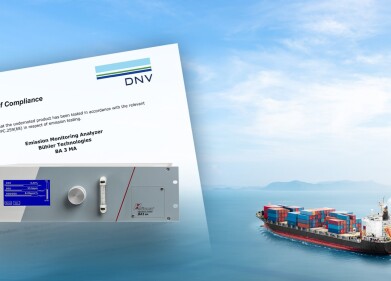Measurement and testing
Where Does Ammonia Come From?
Jul 01 2021
While naturally occurring in trace quantities, ammonia is also one of the most sought-after High Production Volume (HPV) industrial chemicals in the world. It’s both highly useful and extremely dangerous, making monitoring methods an essential part of ammonia health and safety standards.
Below, we explore the key sources of both naturally occurring and commercially manufactured ammonia.
Naturally occurring ammonia
Ammonia is a naturally occurring compound made up of a single nitrogen atom and three hydrogen atoms. Mostly found in trace quantities, it’s a fundamental part of the natural nitrogen cycle. The breakdown of organic waste matter is a key source of naturally produced ammonia, making livestock farms a major source. Forest fires can release significant amounts of ammonia into the atmosphere, with research suggesting emissions will begin to rise as the effects of climate change take effect. Ammonia has also been detected in the solar system, with the largest reservoirs found in the atmospheres of Saturn and Jupiter. NH3 has also been detected on Mars, Neptune and Pluto.
Commercially manufactured ammonia
The United States is one of the biggest ammonia producers in the world, with around 14 million metric tons of NH3 manufactured in 2020. Texas, Louisiana and Oklahoma account for more than 50% of the country’s total ammonia output, with a new project on the Gulf Coast set to emerge as one of the world’s largest single-train ammonia synthesis loops. Spearheaded by Starwood Energy, Mabanaft and Agrifos Partners, the plant will boast an annual capacity of 1.3 million metric tons. It will be powered by a heavy-hitting steam turbine generator and will also feature a next-generation steam methane reformer to generate hydrogen and an air separation unit to manufacture nitrogen.
The Haber-Bosch process
Pioneered in the 20th century by a pair of German, the Haber-Bosch process remains a gold-standard ammonia manufacturing technique. Together, Carl Bosch and Fritz Haber developed an artificial process that uses high pressures and temperatures to convert hydrogen and nitrogen into ammonia. Modern plants have modified the process to meet large-scale industrial needs, though the general concept remains unchanged.
Keeping tabs on ammonia concentrations
While ammonia is a naturally occurring compound, excessive levels can pose a threat to both human and environmental health. As well as impacting air quality, high ammonia concentrations can disturb the natural balance of ecosystems and endanger native flora, fauna and water sources. Monitoring is key, with technologies like the new laser-based analyser from CI Analytics revolutionising the detection process. Find out more about the cutting-edge instrument, which has the capacity to detect ultralow levels of NH3, in ‘New perspectives in ammonia monitoring.'
Digital Edition
PIN 26.1 Feb/Mar 2025
March 2025
Analytical Instrumentation - Elemental Analysis for Quality and Process Control at Refineries, for Lubricants and Wear Metals in Engine Oils - Synthetic Lubricants: New Developments - Scaling...
View all digital editions
Events
Apr 14 2025 Moscow, Russia
Apr 15 2025 Moscow, Russia
Apr 22 2025 Hammamet, Tunisia
Apr 22 2025 Kintex, South Korea
Solar & Energy Storage Summit 2025
Apr 23 2025 Denver, CO, USA



















